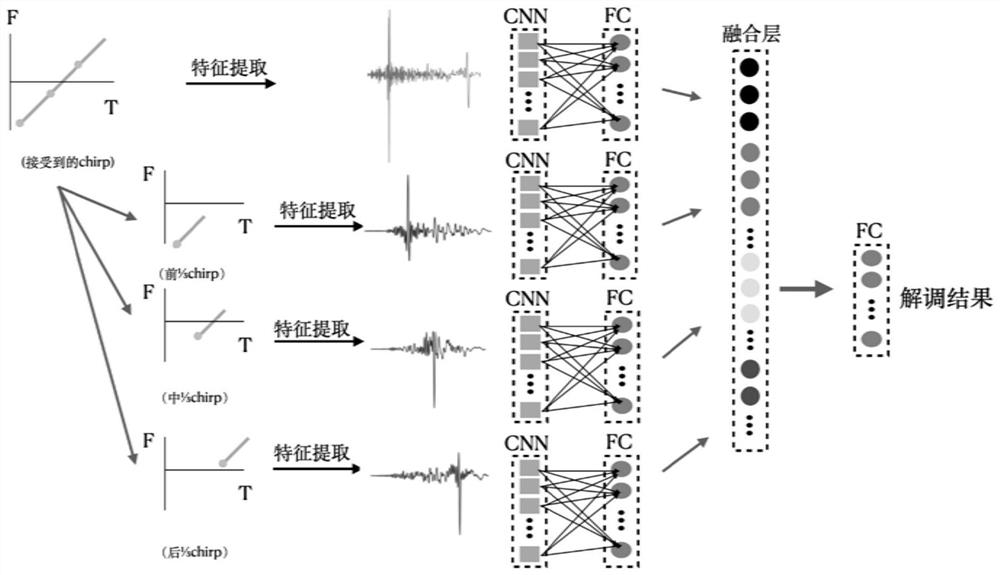A method and system for lora splicing communication based on segmentation neural network decoding
A technology of neural network and communication method, which is applied in the field of LoRa splicing communication method and system based on segmentation neural network decoding, which can solve the problems of short actual life of LoRa network, achieve low power consumption, reduce power consumption, and improve performance
- Summary
- Abstract
- Description
- Claims
- Application Information
AI Technical Summary
Problems solved by technology
Method used
Image
Examples
Embodiment 1
[0068] This embodiment proposes a LoRa splicing communication method based on segmented neural network decoding, including the following steps:
[0069] Step 1: The standard LoRa signal data packet contains the following parts: the pilot frequency used for signal detection, namely Preamble, the start frame delimiter (SFD) used for signal synchronization, and the payload data part that records the original transmission information Payload. The payload data part Payload consists of individual chirp signals. To ensure signal detection and synchronization, the standard headers in LoRa are reserved and do nothing. The first part of each chirp signal is cut out at an appropriate length according to the current signal-to-noise state of the communication, and the cut length is equal to the original length of the splicing rate sr*chirp signal. The optimal choice of splicing rate sr in different communication environments is shown in Table 1. Then the intercepted signal is re-spliced ...
PUM
 Login to View More
Login to View More Abstract
Description
Claims
Application Information
 Login to View More
Login to View More - R&D
- Intellectual Property
- Life Sciences
- Materials
- Tech Scout
- Unparalleled Data Quality
- Higher Quality Content
- 60% Fewer Hallucinations
Browse by: Latest US Patents, China's latest patents, Technical Efficacy Thesaurus, Application Domain, Technology Topic, Popular Technical Reports.
© 2025 PatSnap. All rights reserved.Legal|Privacy policy|Modern Slavery Act Transparency Statement|Sitemap|About US| Contact US: help@patsnap.com



